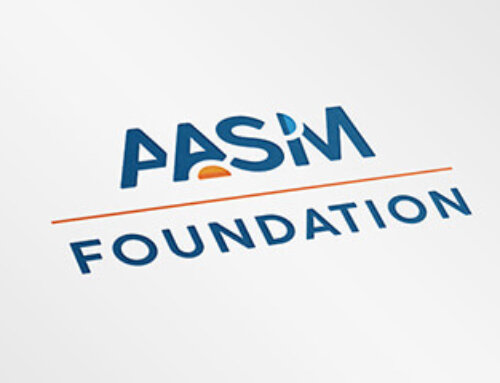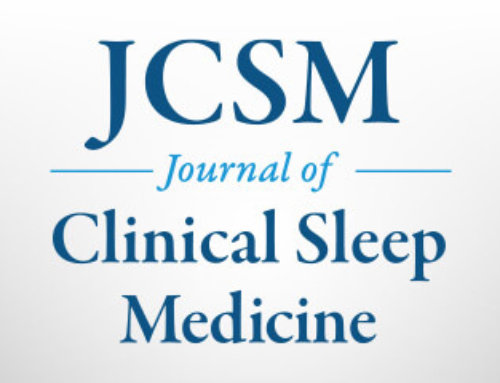WESTCHESTER, Ill.— Recent research has shown Hispanic Americans are at a higher risk for certain diseases and health problems, including obstructive sleep apnea (OSA). A disorder that is extremely prevalent but often undetected among Hispanic Americans, OSA is extremely detrimental to health and is often linked to obesity, cardiovascular disease and diabetes. As Hispanic Americans this month celebrate their culture and heritage during Hispanic Heritage Month, the American Academy of Sleep Medicine (AASM) encourages all Hispanics to look for warning signs of OSA and seek treatment for this disorder from a sleep specialist at an accredited sleep center.
Carlos L. Rodriguez, MD, a sleep medicine specialist and adult neurologist at the Cleveland Clinic Sleep Disorders Center in Cleveland, Ohio, says that one of the biggest mistakes a person with OSA can make is postponing medical care for their symptoms.
“OSA commonly causes symptoms which are largely ignored in our society,” says Dr. Rodriguez. “These symptoms include daytime sleepiness, unrefreshing sleep, fatigue, recurrent awakenings from sleep, night sweats, snoring and witnessed apneas. Although these symptoms appear on the surface to be benign and unworthy of further evaluation, they are our only warning signs that a dangerous condition may be present.”
OSA has been connected to an increased risk of stroke, diabetes and hypertension, and is associated with cardiac arrhythmias, says Dr. Rodriguez. In addition, OSA is linked with glucose intolerance and insulin resistance, and may predispose to the development of Type 2 Diabetes Mellitus, independent of the presence of obesity, warns Dr. Rodriguez.
According to an abstract presented at SLEEP 2007, the 21st Annual Meeting of the Associated Professional Sleep Societies, Mexican-Americans with Type 2 diabetes are at greater risk for OSA.
Other notable findings on OSA are as follows:
- A lack of sleep leads to obesity, which increases the likelihood of developing OSA. An increased body mass index negatively influences cardiopulmonary capacity in persons with OSA.
- OSA may cause sleep restriction, which has a negative effect on cardiac activity.
- Concentration of plasma cysteine, considered a risk factor for coronary heart disease, increases with OSA severity.
- Persons with congestive heart failure and OSA commonly report habitual snoring.
- Having OSA influences both chronotropic and pressoric responses during the exercise test in patients. OSA subjects are unable to increase their heart rate in the same proportion as those without OSA did.
- Intermittent hypoxemia may be an important determinant of sleep disordered breathing-related cardiovascular disease.
According to Dr. Rodriguez, given all of these associated medical conditions, it is important to seek further evaluation if one has any of the following symptoms that may indicate the presence of OSA:
- Unintentionally falling asleep during the day.
- General daytime sleepiness.
- Unrefreshing sleep.
- Fatigue.
- Insomnia.
- Waking up from sleep with a choking sound or gasping for breath.
- Your bed partner has noticed that you snore loudly or stop breathing while you sleep.
The sooner OSA is diagnosed, the sooner a treatment can be prescribed that will put the patient on the path to recovery, says Dr. Rodriguez.
“There are a variety of effective treatments which can dramatically improve one’s health,” says Dr. Rodriguez.
Scientific evidence shows that continuous positive airway pressure (CPAP) is the best treatment for OSA. CPAP provides a steady stream of pressurized air to patients through a mask that they wear during sleep. This airflow keeps the airway open, preventing the pauses in breathing that characterize sleep apnea and restoring normal oxygen levels.
More information about OSA can be found at www.SleepEducation.com/CPAPCentral. The site, developed by the AASM, provides the public with comprehensive, accurate and reliable information about CPAP. CPAP Central includes expanded information about OSA and CPAP, including how OSA is diagnosed; the function of CPAP; the benefits of CPAP and an overview of what to expect when beginning CPAP; the position of experts on CPAP; and tools for success. CPAP Central also features an interactive slide set that educates the public about the warning signs of OSA.
For a listing of accredited sleep centers, please visit https://www.SleepCenters.org.
AASM is a professional membership organization dedicated to the advancement of sleep medicine and sleep-related research.
CONTACT:
Jim Arcuri
(708) 492-0930, ext. 9317
jarcuri@aasm.org
# # #




